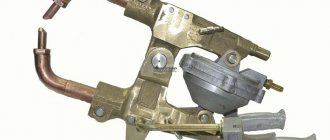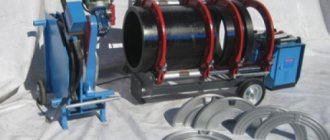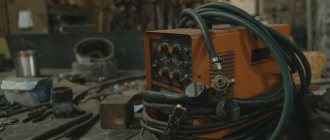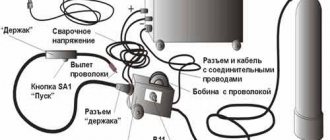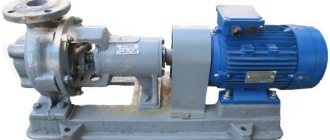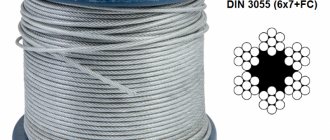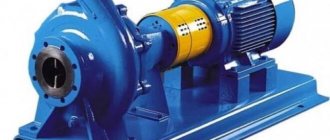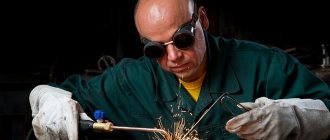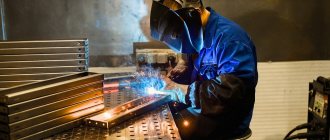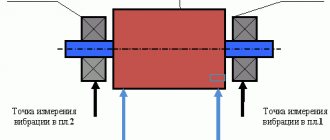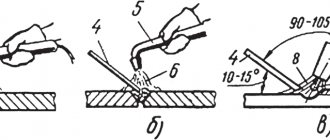When we talk about welding, we first of all talk about the correct control of welding machines. And this is correct, because the skill of a welder largely lies in his welding skills, it is thanks to them that he receives new categories. However, not only the welding machine and the parts on which it is used are involved, but also various welding materials. Find out what it is and how it is used in this article.
Requirements for welding materials
Welding materials are varied and perform the following functions:
- removal of oxides;
- ensuring correct fusion, as well as a more accurate seam;
- protection of the seam from oxygen;
- cheaper welding, etc.
But for welding materials to really help, they need to meet quality requirements. Therefore, their sale is under strict control, and production is carried out according to established standards. For example:
- GOSTs 9466 and 9467 are responsible for metal electrodes.
- GOST 2246 is established for welding wire.
- GOST 9087 regulates the quality of welding fluxes.
- GOST 23949 - for tungsten electrodes, etc.
You need to know these GOSTs, as they are indicated on the packaging and certificates attached to each batch. In addition to GOST, you can also find information about:
- type of material, brand;
- heat number, batch number;
- chemical composition;
- mechanical characteristics of welding materials;
- net weight, etc.
In addition to the composition, requirements for calcination are also established. It is carried out at a temperature of +300 – +350 °C for 1–2 hours. This process, in addition, allows you to find defects in consumables. There is a whole standard, GOST 6032, which describes the requirements for welding consumables that have high durability. They must pass the ICC (intergranular corrosion) test.
There are requirements for storage conditions and transportation.
Methods of application
A complete list of functions performed by auxiliary welding materials is as follows:
- maintaining a full and stable arc discharge;
- blocking oxygen contained in the surrounding air;
- ensuring the specified parameters of the welding process itself and the properties of the metals being processed.
Let us consider how the characteristics of each of the listed welding materials are related to the features of its application.
Electrodes
The main purpose of these mandatory components of the welding process is to supply electric current of one form or another and polarity to the welding zone and provide conditions for melting the metal.
According to their design features, electrodes are divided into metal or non-metallic “consumables”. Metal-based products are made from steel, tungsten and other non-ferrous metals (copper, bronze and the like), and non-metallic ones are coated with non-melting coal and graphite components.
The second type of electrodes (they are also called coated), as a rule, is used when organizing manual welding of workpieces, and high-alloy or carbon steel is used as a rod.
Any variety of electrode materials must ensure not only stable combustion in the welding zone, but also insulation of the weld pool from atmospheric oxygen, and also reduce the effect of spattering of metal particles.
Wire
Wire materials of the so-called “solid” type are used for the manufacture and production of special consumable electrodes and filler rods and can be used both in automatic and semi-automatic welding modes. The chemical composition and main standard size (diameter) of the welding wire is determined by the thickness of the workpieces being welded and the chemical properties of the metal.
Another type of these products is called “powder” and looks like a tube filled with a powdery substance inside. The powder filling the internal cavities performs a function similar to the coating on the electrode rods.
Gases
Welding gaseous materials (argon, carbon dioxide, helium and oxygen) are used both individually and in mixtures. In the first case, they provide isolation of the weld pool from the oxygen contained in the environment, and in the second, they help improve the quality of the weld (increase its mechanical and strength properties).
Special ceramic linings began to be used in welding not so long ago, but have already managed to prove themselves from the best side. The advantages of these auxiliary devices include their versatility, which allows them to be used in almost any welding operation.
Types of materials for welding
Considering how many functions can be performed by welding consumables, they are divided into: electrodes and rods, wires, fluxes, gases and ceramic linings in case of joining joints.
Each consumable does something different due to its principle of use and composition, so to choose, you first need to study all the classifications and their characteristics in order to navigate them freely.
Wire, rods
When the wire melts, it fills the seam formed during welding. Therefore, the wires are called filler wires and they are:
- Low carbon when the carbon content is less than 0.12%.
- Low alloy - for heat-resistant and structural steels.
- Highly alloyed - for chromium-nickel steels, stainless steel.
Non-consumable welding rods and electrodes for machine welding
To connect surfaces in shielding gases, special welding materials are used. The definition of such welding is given as a process that uses an electric arc between an electrode and a surface as a heat source. Round tungsten electrodes with a diameter of 5-10 mm supply electric current to the arc area. Pure tungsten is used as a material or additives of lanthanum, yttrium, and sodium dioxide oxides are added. Tungsten itself cannot be replaced with a cheaper metal, since it is the most refractory, with a high boiling point (5900 ºC) and is used for welding with direct and alternating current.
How to determine material consumption
High quality welding consumables are made from expensive raw materials using sophisticated technologies. Therefore, they need to be saved without wasting them. For this purpose, there are entire standards regulating the consumption of each type of material depending on the type of welding, as well as the equipment used for it.
The standards are not strict, so they only allow you to understand the required amount of consumables approximately. But first you need to calculate the flow rate using formulas in which you simply need to set the parameters.
For example, for wires and electrodes, you need to know the cross-sectional area of the weld, the deposition rate, and the length of the weld. The resulting value is substituted for the values in the regulatory documents, taking into account the margin for test seams or correction of defects.
Table of electrode consumption coefficients per unit of material
But gas consumption can simply be determined using tables; each type has its own.
Welding gas consumption table
Use of acetylene
Acetylene is a compound of oxygen and hydrogen. This flammable gas is in a gaseous state at normal temperatures. The colorless gas contains impurities of ammonia and hydrogen sulfide. The flammable component of the material is dangerous. Welding pressure of more than 1.5 kgf/cm2 or accelerated heating to 400 ºС is enough to cause an explosion. Gas is produced by an electric arc discharge, which promotes the separation of liquid flammable components or by the decomposition of calcium carbide under the influence of moisture.
Gas reducers
A welding material such as a reducer serves to relieve gas pressure from the cylinder and maintain the indicator at a constant level during the entire operating time, regardless of the decrease in the pressure of the substance in the cylinder. Gearboxes are produced in two-chamber and single-chamber types. The former work more productively, maintain constant pressure and do not freeze during prolonged use of gas mixtures. To supply gas to the burner, rubber hoses with fabric gaskets are used, which undergo preliminary testing for strength and pressure resistance, about which there are special documents. Hoses for oxygen and acetylene are used separately. To supply kerosene and gasoline, hoses made of material resistant to gasoline are used.
By metal thickness
Electrodes for manual arc welding are manufactured in different diameters. The cross-section of the rod is indicated on the pack, and experienced welders are able to determine it by eye. The thickness of the coated electrode is selected based on the thickness of the sides to be welded and the current strength. If thick workpieces are welded with thin electrodes, the latter will overheat, which will lead to destruction of the coating, splashing of liquid metal, and excessive consumption of electrodes. Welding thin metal with a rod that is too thick will be of poor quality, since the electrode will create excessive current resistance, and it will not be possible to heat and melt the workpiece.
In the table we have given options for selecting the diameter of the electrode according to the current strength and thickness of the parts being welded.
| Metal thickness, mm | Electrode diameter, mm | Current strength, A |
| 1-2 | 1,6 | 25-55 |
| 2-3 | 2 | 40-80 |
| 3-4 | 3 | 80-160 |
| 4-6 | 4 | 120-200 |
| 6-8 | 5 | 180-250 |
| 10-20 | 6 | 220-320 |
By type of current
For manual arc welding, inverters, generators, rectifiers or transformers are used. The latter produce alternating current. Welding with them is characterized by a hard arc, an increased amount of metal spattering, and a crackling sound when the arc burns. If you plan to cook with a transformer, you need electrodes for alternating current or universal ones. They can work with any current.
All other devices produce direct current, at which it is important to pay attention not only to the suitability of the electrodes for this indicator, but also to the polarity. Direct polarity is “minus” on the holder, and “plus” on the product. The reverse is on the “plus” holder. The pack of electrodes indicates which polarity they are suitable for when welding with direct current. Here, too, there are universal electrodes (for any polarity) and highly specialized ones.
Carrying out welding work in a gas environment
Today, the so-called oxygen welding is gaining increasing popularity, which ultimately is of high quality, and the connection is very strong and durable. Oxygen, in terms of its molecular weight, is significantly heavier compared to air; moreover, it ensures the rapid combustion of various vapors and gases, and in this case a temperature arises that is quite sufficient to melt even a refractory metal.
You should work with such gas very carefully, since compressed oxygen comes into contact with oils, greases and other fatty materials and instantly ignites and creates a risk of explosion. Welding in such an environment is carried out only in clean conditions. Oxygen cylinders must be stored in strict accordance with all existing fire safety standards.
Oxygen intended for welding work can be technical or obtained from the environment. To obtain it, air is passed through special separation devices, filtered, cutting off various types of impurities - nitrogen, carbon dioxide, and so on. At the last stage, the gas is dried and placed under high pressure in cylinders that have special reinforced thermal insulation.
Acetylene is often used, which from the point of view of chemical structure is a compound of oxygen and hydrogen. The gas placed in cylinders is explosive, colorless, and contains minor ammonia impurities. Due to the fact that these products are quite dangerous when used, they are gradually being abandoned, replacing them with argon, helium and other gases that do not pose a fire or explosion hazard.
Welding equipment - what is it, types, features
Without the welding process, it is impossible to imagine a single construction site, industrial production or solution to any everyday issues, and therefore it is not surprising that welding equipment is in constant demand. Today, welders have many welding methods and methods in their arsenal: using electrode or graphite rods with excellent conductive properties, using special welding wires, as well as based on gas, plasma, laser and other technologies.
Wire and welding fluxes
Unknown wire of an unidentified brand is not used for welding. The surface of the filler wire is smooth, free of rust, scale, and grease. It is selected according to the melting index, which is lower than this characteristic of the steels being welded. One of the quality properties of the wire is its gradual melting without sudden splashes. As an exception, if the required wire is not available, for welding brass, lead, copper, and stainless steel, strips of cut metal from the same material that is being joined are used. When welding metals such as aluminum, magnesium, copper, brass, cast iron, active interaction of non-ferrous castings with oxygen from the atmosphere or an oxidizing flame occurs. The reaction leads to the formation of oxides with a high melting point, which create a harmful film and make it difficult for the substance on the surface to transition to a liquid state. A welding material called flux, consisting of a paste or powder of the appropriate composition, is used to protect the surface of the molten mass. The material is boric acid, calcined borax. Fluxes are not used when welding alloy steels.
